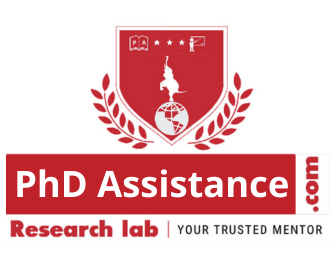Discussing the Future Scopes and Research Gaps on TinyML
Tiny ML (Tiny Machine Learning) is a framework that enables complex machine learning models to run on limited resources
By Simply eliminating the need to rely on powerful cloud infrastructure, it will enable the data processing to take place directly on constrained devices such as mobile phones and edge devices. Which will make it feasible to run complex algorithms on limited resources.
TinyML is crucial for enabling real time processing without the need for continuous cloud connectivity. By processing data locally, TinyML reduces latency and improves data security. Such implementation replaces the need for computationally extensive resources.
This blog will explore the future directions and potential breakthroughs of TinyML intelligent systems. We will look at the current advancements, emerging trends, and the impact of TinyML across various sectors. The following content will aim for a complete understanding of TinyML.
Recent innovations in TinyML include advancements in microcontroller technology and algorithm efficiency. Which contributed to enrichment of existing models by advancing their capability.
The Latest microcontrollers offer better power efficiency than the previous ones while offering high performance. In addition, some algorithmic improvements have optimized ML models to work under limited resource.
Such advancements involve decreasing the weight of models through pruning and quantization. But they require additional optimization to keep accuracy and stability after reduction of weight.
TinyML is applied in diverse fields in various form factors such as voice recognition, gesture control, wearables, smart sensors, etc.
They have undergone a transformation, re-designing the infrastructure in all prominent fields. They increase the capability to perform complex tasks in limited and edge devices.
Here are some key applications…
TinyML models are employed to monitor environmental factors to produce real time analysis on limited devices. This allows for real-time monitoring in various fields like agriculture, weather reporting, renewable energy generation, etc.
They generate real-time data from sources such as smart sensors and utilize it for data processing. They take place within the computational resource to derive insights and make decisions based on that.
Lower Accuracy
Low-powered microcontrollers and the decreased weight of ML models can significantly impact their accuracy. Hence, they cannot be used stably in sensitive fields like healthcare and finance, as they involve high risk.
This can be addressed by prioritizing enhancements in optimization techniques. Such as quantization and pruning which reduces the size and complexity of the models without losing accuracy. This will improve the reliability of TinyML models.
Privacy issues
Devices that use TinyML often rely on sensors such as cameras and microphones to collect data.
This might be vulnerable to data breaches if the data is not stored properly due to storage constraints.
However, there is an anticipated increase in the development of privacy-preserving methods that ensure data security.
Making autonomous data processing on devices using cryptographic methods will secure the data. By improving the privacy methods of TinyML, they can become more functional in sensitive areas by eliminating potential threats.
Resource constraints
The nature of microcontrollers can restrict them from running complex algorithms.
To make them work efficiently, it needs effective optimization, which can be challenging
Integrating TinyML with Edge Devices will allow for more efficiency in data processing.
Combining local computing with cloud computing will make real-time processing possible on edge devices. At the same time, it enhances the performance of the devices. This integration will use both local and cloud resources to accelerate robust applications.
|
Future directions |
scope |
|
Developing advanced encryptions to improve privacy measures of federated learning. |
Eliminating the threats of data breaching and improving the security systems of Federated Learning |
|
Developing tailored algorithms for unique constraints of tiny devices. |
Customized algorithms for tiny devices to improve the rate of accuracy. |
|
Implementing (DRL) Deep Reinforcement Learning techniques on resource-limited devices by Transferring trained models on constrained devices. |
Enabling intelligent systems to make effective real-time decisions |
|
Benchmarking various TinyML frameworks |
Benchmarking their overall efficiency to establish standards to standardize TinyML models. |
These future directions and gaps of TinyML discuss the necessary areas for extensive research and development. It is necessary to stay informed about recent developments and consider their implications for the future. Its revolutionary potential in the field of data processing and AI / ML will continue to provide novel things that deserve more study.
Finding the right way to explore these things is obligatory for research and development. Thats where PhD Assistance backs you with full support and guidance. Having field experience of over a decade, we provide you with complete assistance and make you distinguished. Contact us today!

